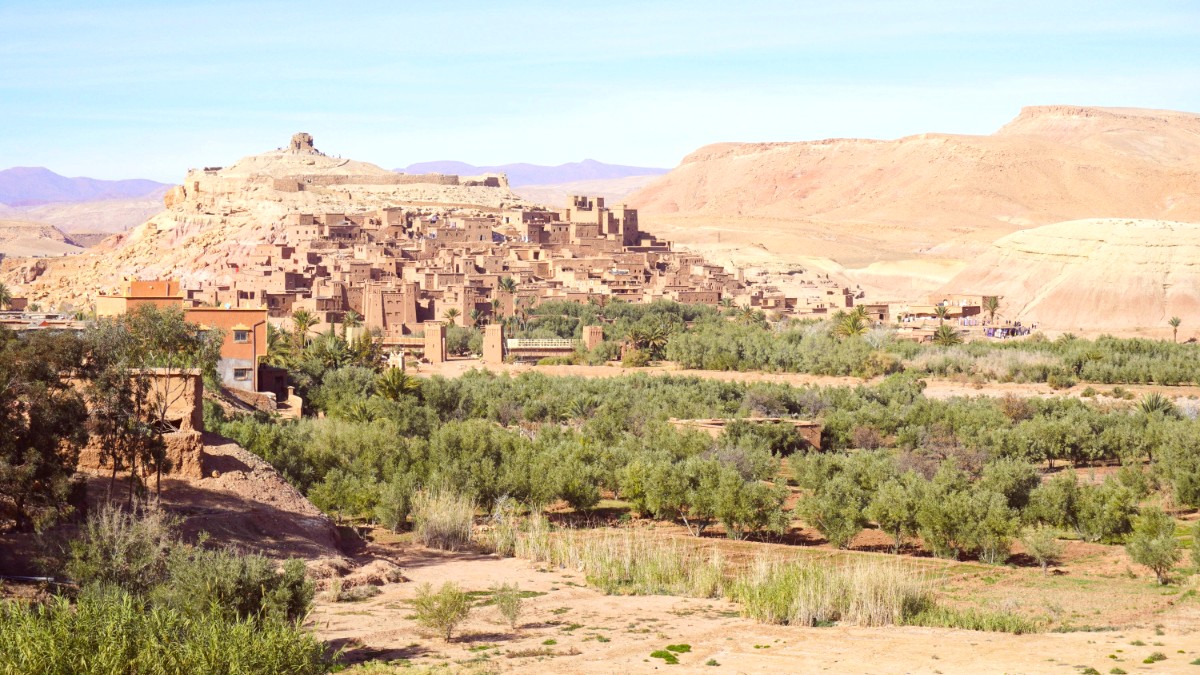
Morocco
Common ingredients include lamb, beef, chicken, and fresh vegetables like carrots, potatoes, zucchini, tomatoes, and chickpeas. Olives and dried fruits (dates, apricots) also feature.
Spices form the backbone: cumin, turmeric, ginger, paprika, saffron, cinnamon, and Ras el Hanout (a complex blend) are used extensively. Fresh herbs like mint and cilantro feature prominently.
Typically a light meal in the morning, often consisting of bread with olive oil, honey, jam, olives, cheese, and mint tea or coffee.
The main meal of the day, usually between 1 PM and 3 PM. Often features a hearty tagine or a large serving of couscous.
Generally lighter than lunch, eaten later in the evening, typically from 8 PM onwards.
A slow-cooked stew named after its conical clay pot. Varieties include chicken with preserved lemon, beef with prunes, and flavorful vegetable tagine.
Widely available in all restaurants, from local eateries to upscale hotels.
Steamed semolina grains served with tender meat (chicken, lamb, or beef) and various vegetables.
Families often prepare it on Fridays. Many restaurants offer it as a special on Fridays.
A hearty and savory traditional Moroccan soup. Made with tomatoes, lentils, chickpeas, and lamb or beef.
Available year-round in local eateries and some restaurants.
Honey-coated sesame cookies, shaped like flowers, popular during Ramadan.
Crescent-shaped pastries filled with almond paste, often served with tea.
Le Berbère Palace offers Moroccan and international cuisine in an upscale, refined setting with excellent service.
Restaurant Douyria and Restaurant Habous serve traditional Moroccan dishes in cozy settings. Le Kasbah des Sables offers a mix of Moroccan and international fare.
Look for small local "snack" shops along Avenue Mohammed V or in older parts of town for inexpensive brochettes, sandwiches, and simple tagines.
Find fresh produce, dates, nuts, and spices. Small local eateries near the market offer prepared meals.
A good place to observe local life and find ingredients.
Options are limited compared to larger cities. Some hotels and larger restaurants may offer basic international dishes like pizza or pasta.
Catering to a wider range of tastes, mainly in tourist-focused establishments.
Vegetable tagines and couscous are staple. Vegan requires clear communication.
All meat is Halal. Kosher is not widely available; vegetarian options are alternatives.
Difficult due to bread. Confirm ingredients; translation cards are useful.
Nuts and various spices are common. State severe allergies clearly.
A memorable dining experience as part of a desert camp, featuring traditional Berber food.
Often accompanied by local music in a communal setting.
Explore small local restaurants for authentic, unpretentious Moroccan meals.
Discover hidden gems favored by residents.
During Ramadan, Harira soup, dates, and various sweets break the fast. Eid al-Adha involves specific lamb dishes.
Carry a translation card stating dietary restrictions in Arabic and French.
A staple served with almost every meal, perfect for scooping tagine sauces.
Berber dishes often feature a rich array of local vegetables.
Lamb and chicken are often slowly cooked to tender perfection.
Moroccan cuisine uses a rich array of spices like cumin, ginger, turmeric, and paprika for deep flavors.
Ras el Hanout, a complex blend, enhances many dishes.
Dried fruits like prunes and apricots frequently combine with meats, providing a sweet contrast.
This balance creates unique flavor combinations.
Dates, almonds, and traditional grains are central to Ouarzazate's culinary identity.
Dishes emphasize fresh vegetables and aromatic spices for delightful tastes.
Mint tea is a common welcome. Shared meals reflect Moroccan hospitality.
Always try the local mint tea; it is a cultural staple.